One of our smaller species, common squirrel monkeys reside within our sanctuary in harmony with the larger capuchins and spider monkeys. Because of their tiny size, they are often tricky to photograph in the wild (see Bushbabies Photo Contest!) and are naturally vulnerable to predators such as hawks, jaguars and snakes. Relatively independent in nature, squirrel monkeys (even those kept as pets) generally do not crave human attention as other known species have, such as the inquisitive capuchin monkey.
Physical Characteristics:
The squirrel monkey's colouration is grey with traces of red-orange fur and yellow-orange arms, hands and feet. Their ears have small tufts of white fur on the ends, as well as around their eyes. Upon looking closer, one can see the circle of brown-black fur surrounding their mouths. Squirrel monkeys are very light: males weigh 554-1150g, and are only approximately 318mm long.
Long known to be the most intelligent of monkeys, capuchins are most commonly targeted for the pet trade because of their “entertaining nature”. In reality, they don’t make very good pets (see article).
Physical Characteristics:
Tufted capuchins such as Bonnie, have a “signature” tuft of dark hair on the tops of their heads. When they are very young, they do not have such tufts, and when they are juvenile, two little “horns” of hair begin to grow on their heads, looking quite like little devils! Finally, at maturity, their heads sport good-looking tufts. Body colour is light to dark brown. Their tail is semi-prehensile (they can use it to grip onto branches, but not to full effect). Approximate length is 70cm to 1m, and weight about 3kg, with males being heavier than females.
Habitat:
From Brazil, Guyana, Suriname and French Guiana, to Venezuela in the north. They fare particularly well in dry lowland areas quite similar to our own.
Sarah has become quite the celebrity at the Sanctuary, mostly because if she gets a like in you, she will climb on you and you will carry her for the whole tour.
An outstanding feature of these somewhat odd-looking primates is their fully-prehensile tail, which can grip and hold onto just about anything possible to facilitate movement in the trees.
Physical Characteristics:
The spider monkey’s fur can be black or blonde, although mostly dark with a lighter belly, such as old Frankie and his girlfriend. Adults weigh between 6-8kg, and measure about 30-70cm tall when walking upright (a feat they can do quite well). Spider monkeys do not have thumbs – another feature that facilitates their effortless swinging from branch to branch.
These furry and relatively placid pro-simians are the latest additions to our sanctuary. They can almost always be seen basking in the sun, sitting in a meditative position much like that of a yoga instructor!
Physical Characteristics:
Reddish-grey in colour, with white on their undersides and on the ears. Distinctive rings around their eyes and black and white rings around their tails set them apart from other subspecies, making them quite easy to spot in the wild. Visitors often comment on their black muzzles, looking quite like that of a small dog. The size of males and females is approximately the same, with body length being 42.5 cm on average. Ringtailed lemurs weigh between 2,207-2,213g. One remarkable physical feature of this subspecies is a scent gland located on the underside of each wrist, called a “horny spur.”
These stunningly-beautiful lemurs are most easily identified by their black and white markings and thick coats. We often think of them as miniature polar-bears, well protected against our cold winters.
Physical Characteristics:
Black and white in colouration with fluffy collars (hence the name “ruffed”). On average, they weigh around 3.5kg and are about 110cm long, tail included. As with ringtails, these lemurs sport long noses, giving them a very good sense of smell.
Habitat:
Eastern Madagascar. They are primarily arboreal, spending much of their time in the canopy of the primary rainforest. Black and white ruffed lemurs are a protected subspecies.
Many folks expect to see bushbabies bouncing around when they arrive at our sanctuary. However, because we have created a natural and wild environment, these little creatures cannot be seen until sunset (about 7-8pm in summer, and 4:45– 6pm in winter).
Physical Characteristics:
Bushbabies are some of the smallest prosimian species. Tail included, they measure only 37cm in length and weight about 150g fully grown. Their large, orange-brown eyes allow them to see very well in the dark. If humans had a similar skull structure, our eyes would be the size of soccer balls! Their fur is a light grey with a partly yellow stomach and a white stripe down the nose. Owing to their nocturnal nature, Bushbabies are virtually inactive until sunset, when they emerge to hunt for insects. When a bushbaby jumps from branch to branch, it wipes its hands on its genitals with urine, so as to facilitate grip. This is a very quick process, and can really only be captured on slow-motion film or photographs.
Conservation status
Near threatened (IUCN Red List, 2016) What they look like
Unique among Eulemurs, common brown males and females share the same coloring—grayish brown with a blackish face and orange-red eyes. The more northern population has large, noticeable light patches above the eyes. Weighing 2-3 kilograms (about 4-6 pounds), they are sometimes confused with mongoose lemurs, which are grayer and sexually dichromatic.
Where they live
In Madagascar, common brown lemurs congregate in a variety of fragmented forests, mostly dry deciduous and moist montane forests in the northwest and rainforests in the central east. They are found in four protected areas including Andasibe-Mantadia National Park, Ankarafantsika National Park and Zahamena National Park. One of only two species found in the wild outside Madagascar, common brown lemurs also live on the island of Mayotte in the Comoros—likely introduced there by humans.



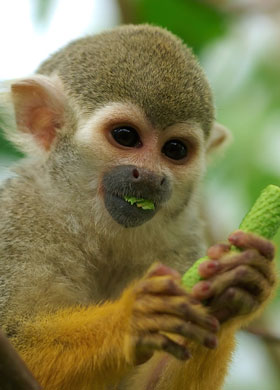
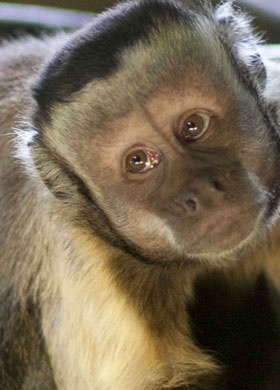
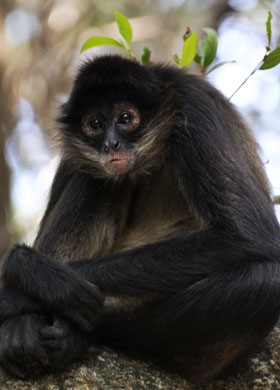
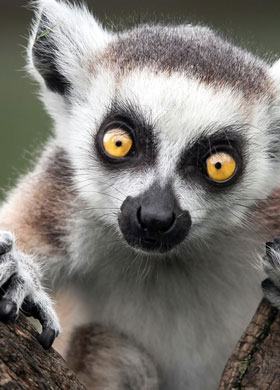
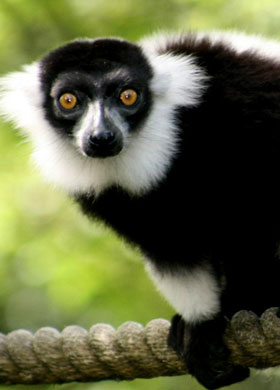
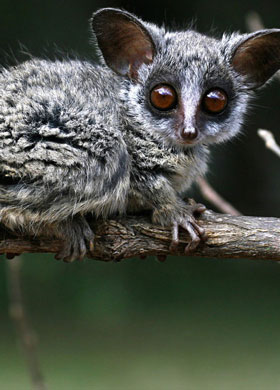
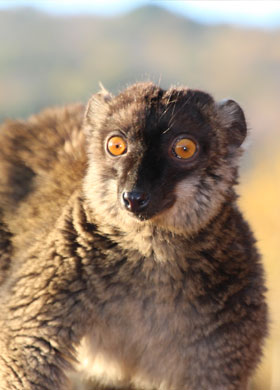
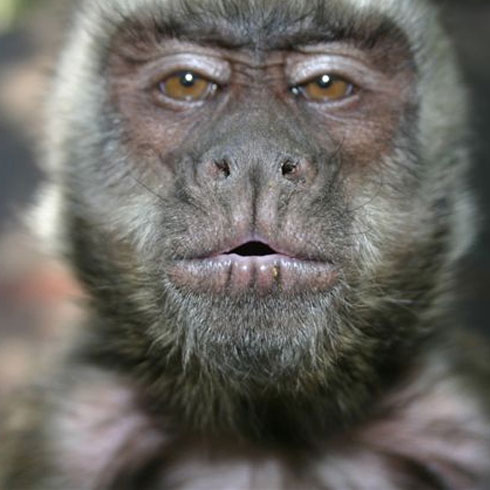 Conservation in Southern Africa is rapidly becoming unsustainable without the active involvement of the community, especially the younger, more active generation. The Bushbabies Monkey Sanctuary and The Elephant Sanctuary group strongly believe that we have to get the younger members of communities involved to instill a passion for the environment and wildlife in them through education.
Conservation in Southern Africa is rapidly becoming unsustainable without the active involvement of the community, especially the younger, more active generation. The Bushbabies Monkey Sanctuary and The Elephant Sanctuary group strongly believe that we have to get the younger members of communities involved to instill a passion for the environment and wildlife in them through education.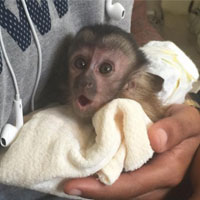 I'll introduce you to Joyce, for example. A young female capuchin, she was rather pampered with child-like paraphernalia; a dress and a small hat around her head. Cute, indeed. She had been with her "foster" family since only two months old, bought straight from a breeder. The couple who owned her did not have children, and so decided to substitute the missing link with a primate, albeit a bit smaller...and with sharper teeth.
I'll introduce you to Joyce, for example. A young female capuchin, she was rather pampered with child-like paraphernalia; a dress and a small hat around her head. Cute, indeed. She had been with her "foster" family since only two months old, bought straight from a breeder. The couple who owned her did not have children, and so decided to substitute the missing link with a primate, albeit a bit smaller...and with sharper teeth.



